This dense and flavorful Homemade Rye Bread with Dill is perfect for sandwich-making or toasting. A combination of whole wheat flour, rye flour, all-purpose flour, and a bit of brown sugar makes this bread a dream for slicing...and eating!
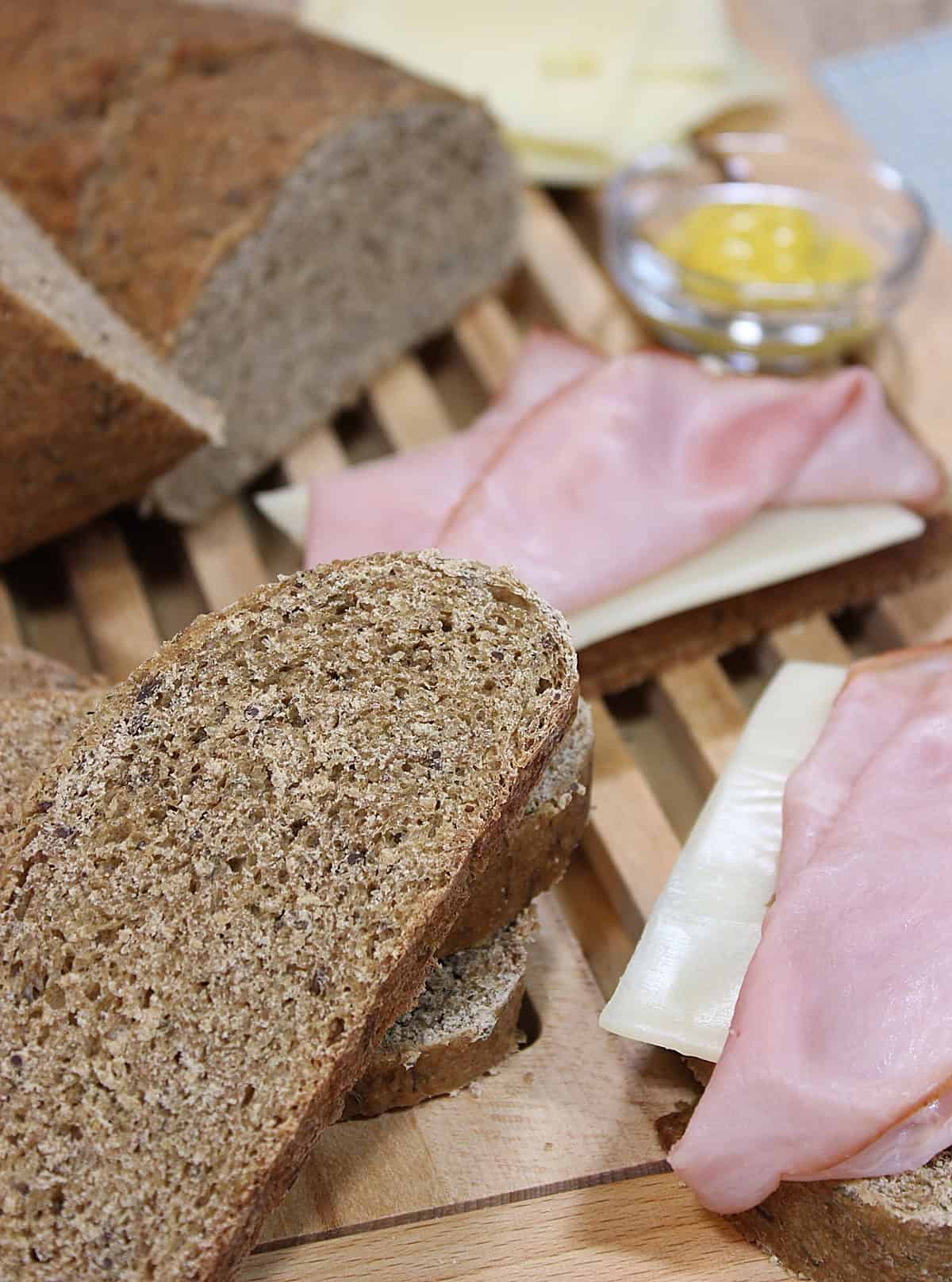
Whether you enjoy baking with yeast, or making a savory quick bread, here are some additional recipes I know you'll enjoy: Oatmeal Honey Bread with Sunflower Seeds, Italian Herb and Cheese Quick Bread, Sally Lunn Batter Bread, and Skillet Cornbread with Pumpkin and Sage.
This recipe post and its contents may include affiliate links for your consideration. I may earn a commission from qualifying purchases, but your prices are never increased as a result. Thank you.
Table of Contents Found Here
- The ingredients:
- Kitchen tools and equipment needed:
- What does a foamy yeast mixture signify?
- What if the yeast mixture does not get foamy?
- How this recipe came to be
- Why this recipe works
- How much homemade rye bread does this recipe make?
- Why use a combination of flours to make rye bread?
- Can the amount of herbs and spices be adjusted, if desired?
- What is the purpose of slashing the top of the dough before baking?
- Is dark brown or light brown sugar best for this recipe?
- Can ground caraway seeds be used as a substitute for whole seeds?
- The step-by-step photo instructions
- Related recipes for you to enjoy:
- Printable Recipe Card
- Please comment if you've made this recipe.
*Disclaimer - This recipe was originally published in 2015. I've gone back into this post to update it with additional information including a printable recipe card (which it didn't have before), and have included updated images. However, the recipe itself has remained completely unchanged.
The ingredients:
*Please note that the exact measurements along with a "shop the recipe" feature from Instacart and Walmart is available inside the printable recipe card.



Kitchen tools and equipment needed:
- baking sheet
- parchment paper (optional)
- stand mixer, optional (with dough hook)
- mixing bowls
- spatula
- whisk
- measuring cups and spoons
- kitchen scale (optional)
- paring knife or bread lame
- plastic wrap
- kitchen timer
- cooling rack
- serrated knife for slicing
What does a foamy yeast mixture signify?
Don't fret if your yeast and warm water mixture gets foamy. This is precisely what you want to happen.
A foamy yeast mixture is a sign that the yeast is active and will do its job of producing carbon dioxide (fermentation oxygen bubbles) throughout the dough's gluten network, providing the rise (proofing) the dough needs to produce a beautiful loaf of bread.
What if the yeast mixture does not get foamy?
It means that the yeast has died (expired) and will no longer perform its job as required. Toss the old yeast out, and start the process again with a new package (or jar) of yeast.
How this recipe came to be
For me, nothing is more satisfying and rewarding than making homemade bread. I love the entire process.
From the blooming of the yeast (activated by dissolving it in a warm liquid), to the mixing of the usually simple ingredients, to the proofing (rising), and ultimately baking, the tantalizing aroma that always fills the house. It's magical.
Why this recipe works
This rye bread with dill recipe is the perfect bread for someone who is just dipping their toe into the pool when it comes to making homemade bread.
The steps are easy, and all the ingredients are readily available in the grocery store. Just remember to check the specialty flour section for rye flour, as it may not be on the shelves with the other baking flours in your market.
It really doesn't get any easier, and your family and friends will think you're a bread-baking rock star. Especially when you bring a loaf all tasty and warm to the dinner table. You can almost hear the cheers!
How much homemade rye bread does this recipe make?
This recipe yields two nicely formed, rustic loaves that are easy to make by gently rolling the risen dough on the counter.
Why use a combination of flours to make rye bread?
Rye flour has a low gluten content, resulting in a weaker gluten network than wheat flour. However, the rye flour lends the flavor and color you want in rye bread.
The wheat and all-purpose flour add structure to the bread because they both have a higher gluten content than rye flour alone, which prevents the bread from becoming overly dense and heavy.
Can the amount of herbs and spices be adjusted, if desired?
Sure! If you'd like to decrease the amount of either the dill weed or caraway seeds, please feel free to do so.
But, if you'd like to increase the amount of either, I'm always in favor of increasing quantities to suit your tastes or preferences.
What is the purpose of slashing the top of the dough before baking?
As the dough rises (proofs), it will naturally want to split as it expands.
Slashing the top of the dough before baking gives you control over how (and where) the bread will split, so it doesn't happen in any unforeseen, uneven, or unsightly ways.
Is dark brown or light brown sugar best for this recipe?
The choice is yours. Use what you have on hand, but know that dark brown sugar will give your finished bread a darker, more intense molasses flavor.
Can ground caraway seeds be used as a substitute for whole seeds?
Most definitely.
However, I recommend reducing the amount of ground caraway seeds slightly.
It is important to smell the dough after adding the ground seeds before proceeding. If you feel it needs more caraway (judging by its aroma), go ahead and add more until you're happy with the fragrance level of the caraway.
The step-by-step photo instructions
- Allow the yeast to bloom and get foamy in a ¼ cup of warm water and a pinch of brown sugar.
- Add the yeast to a mixing bowl along with additional warm water, caraway seed, dill weed, molasses, brown sugar, and oil.
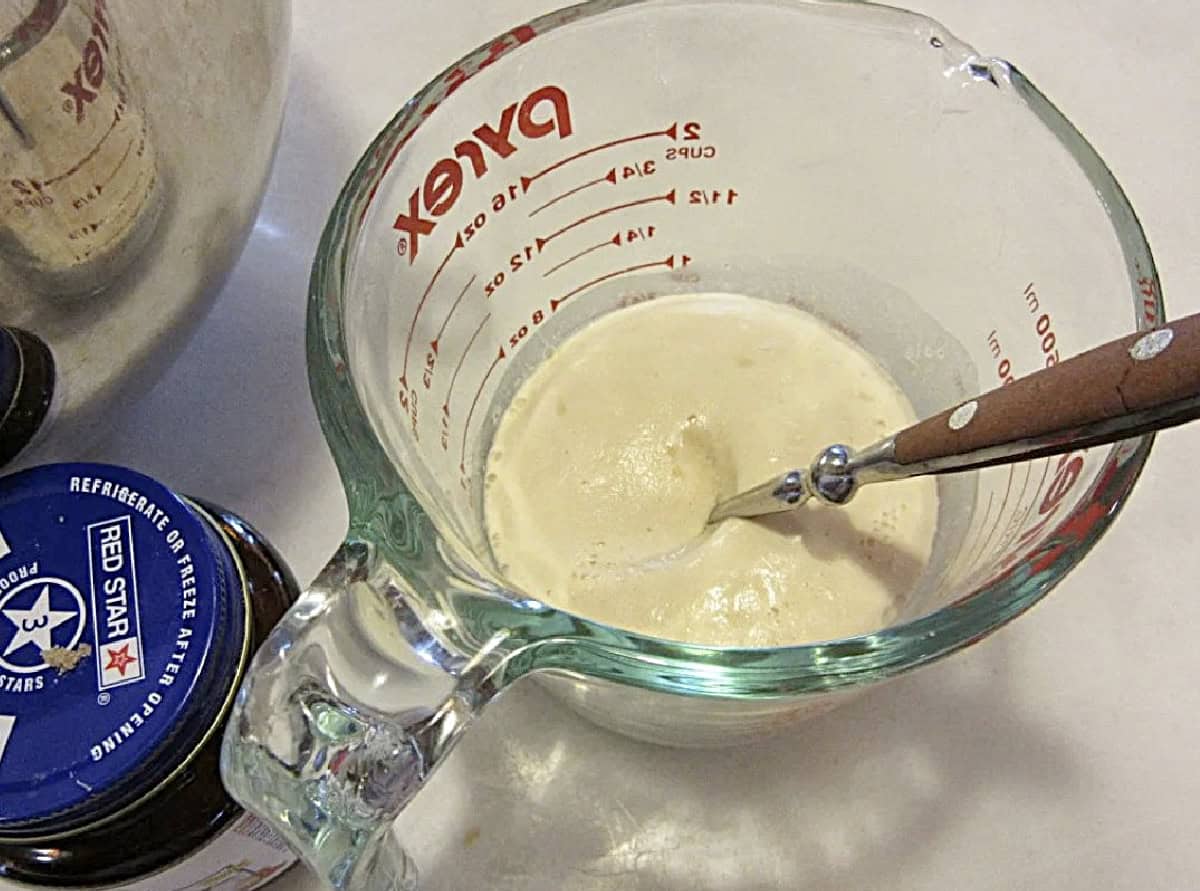

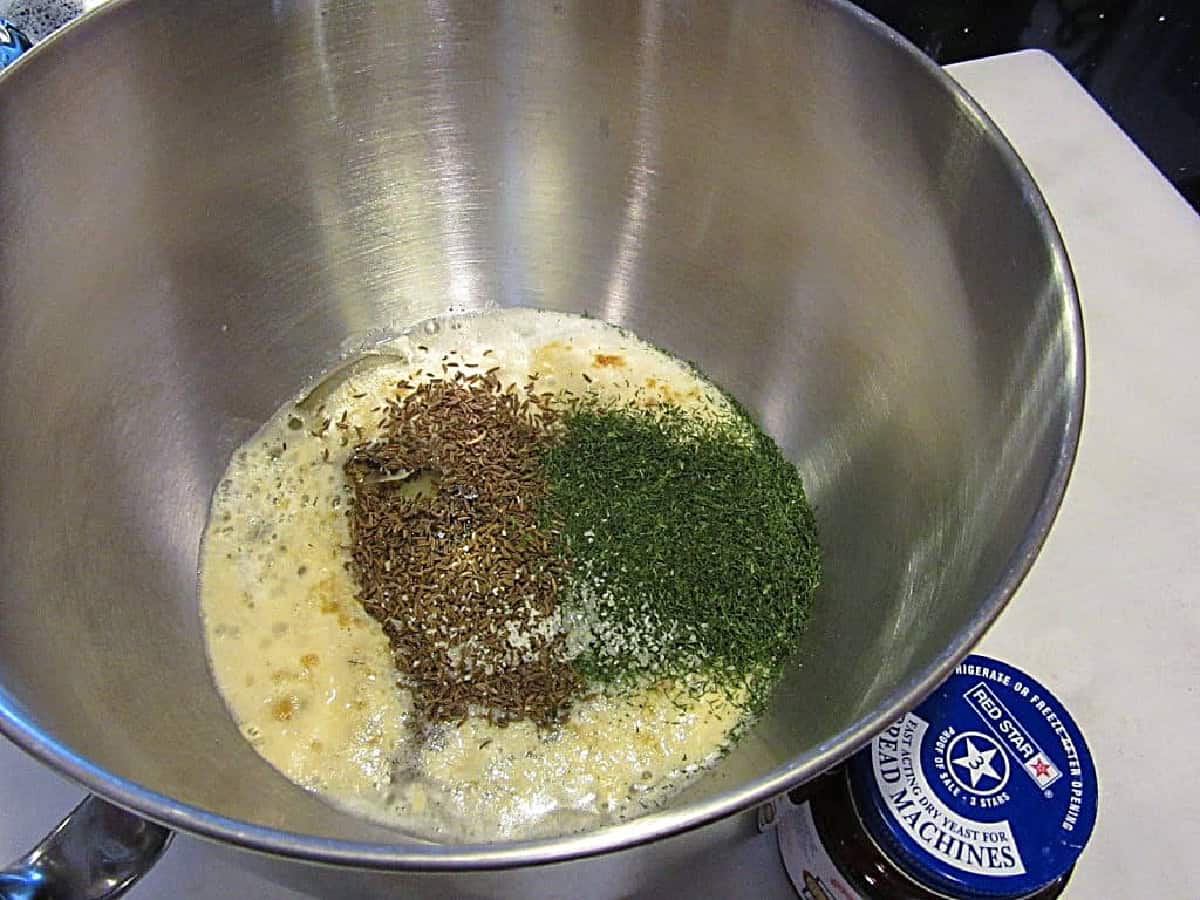
- Add in the flours and knead until the mixture forms a firm ball.
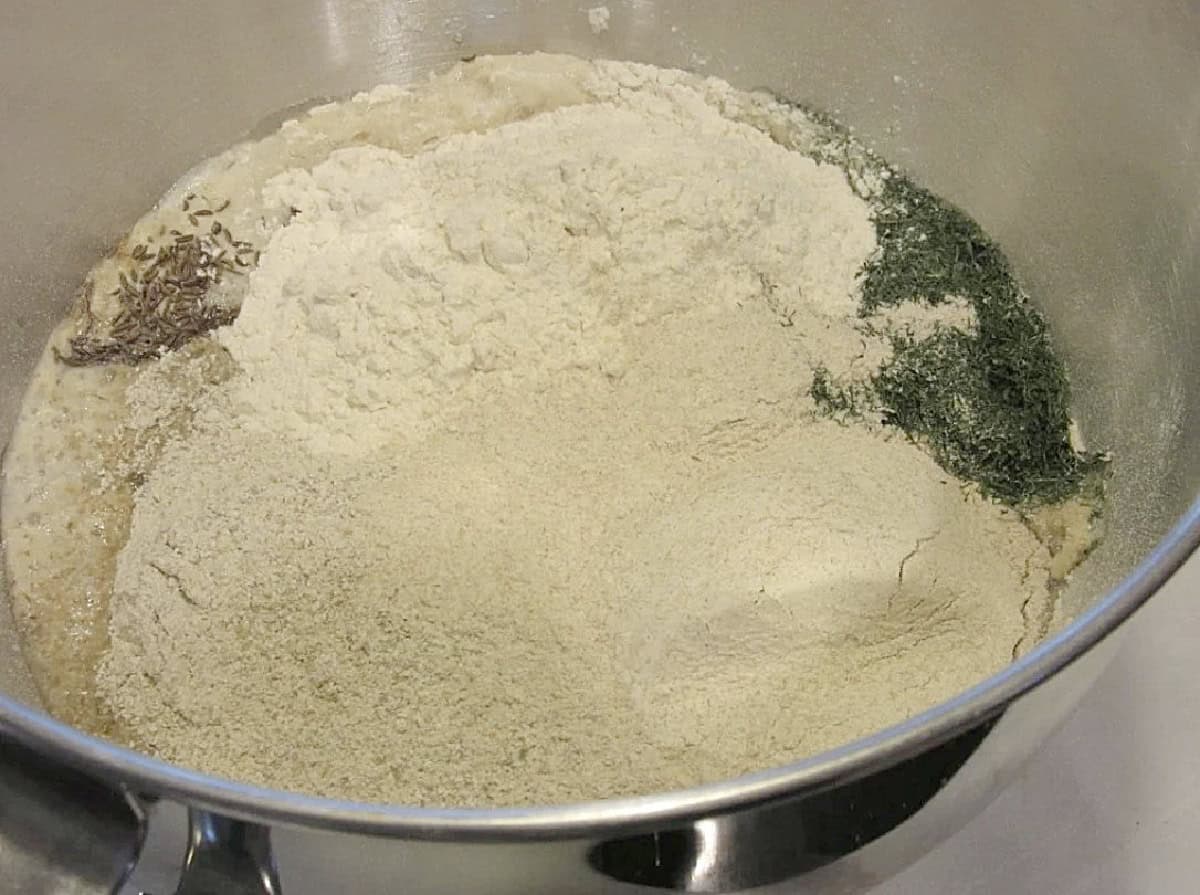
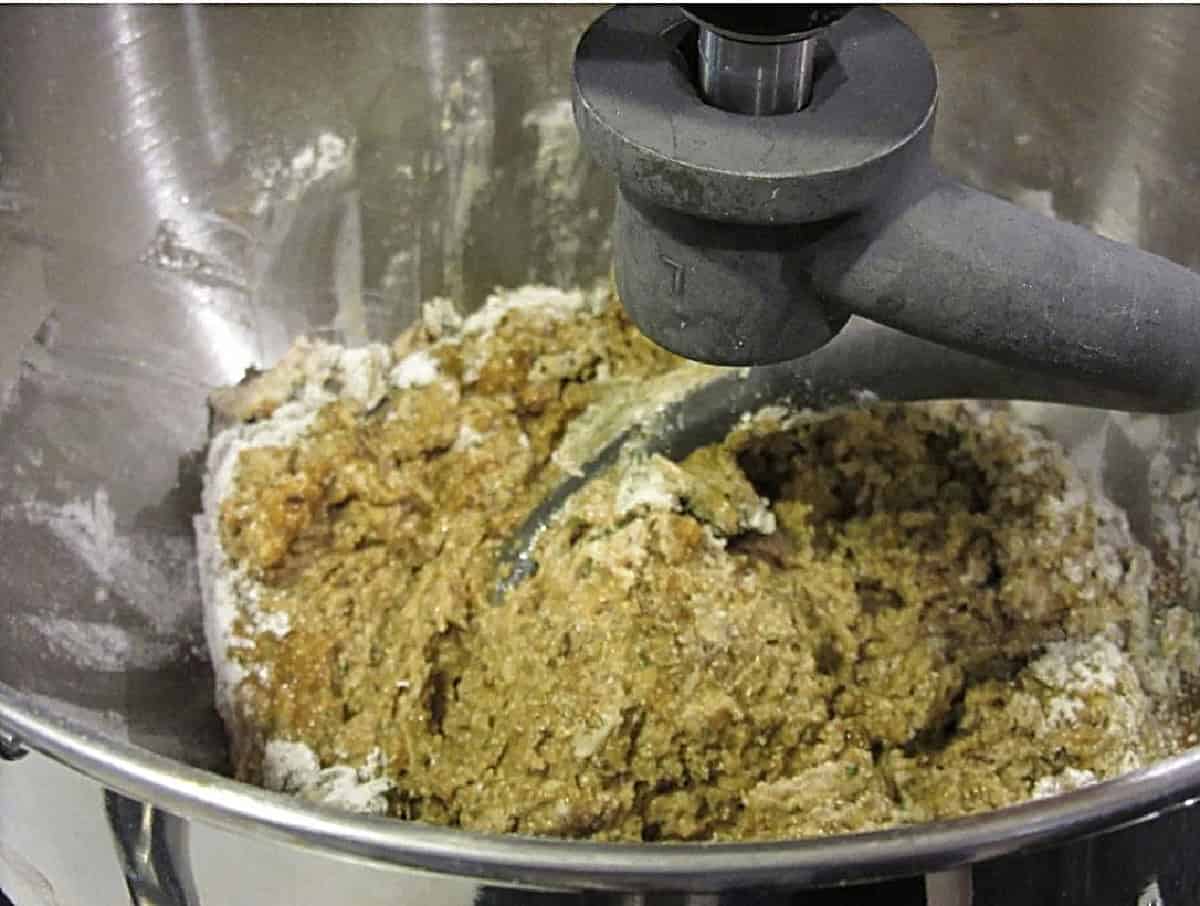
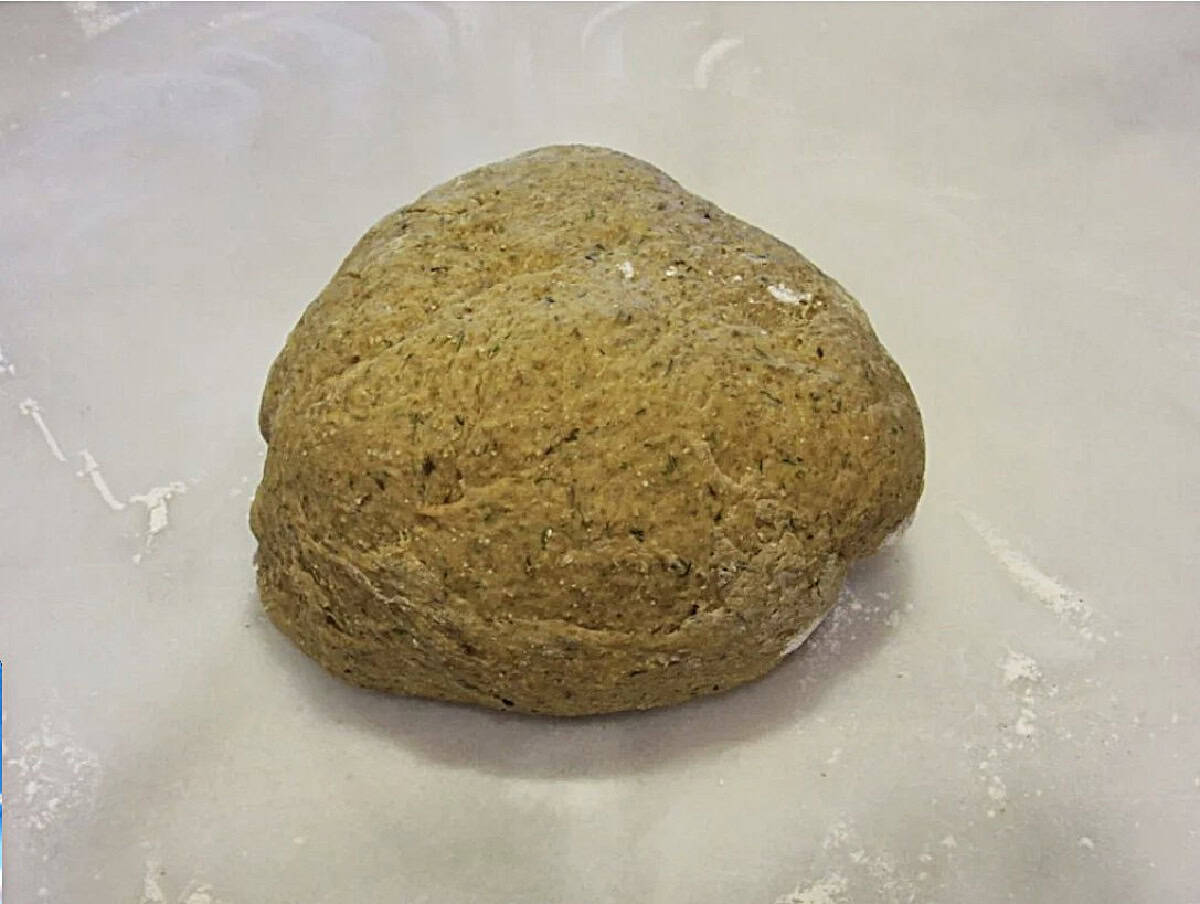
- Allow the dough to rise until doubled in size.
- Divide the dough in half and shape it into two logs.
- Cut slits on top of the loaves and allow them to rise again until doubled.
- Bake for 30-35 minutes until golden brown. Cool, slice, and serve.
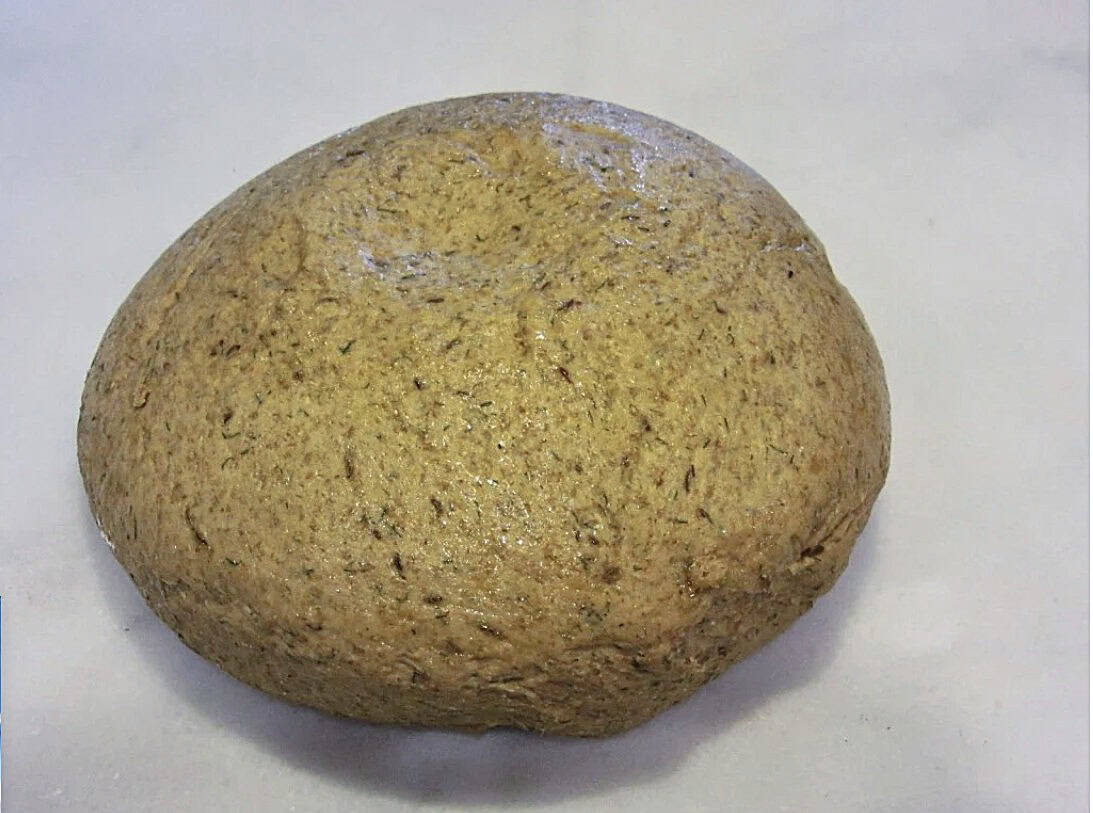



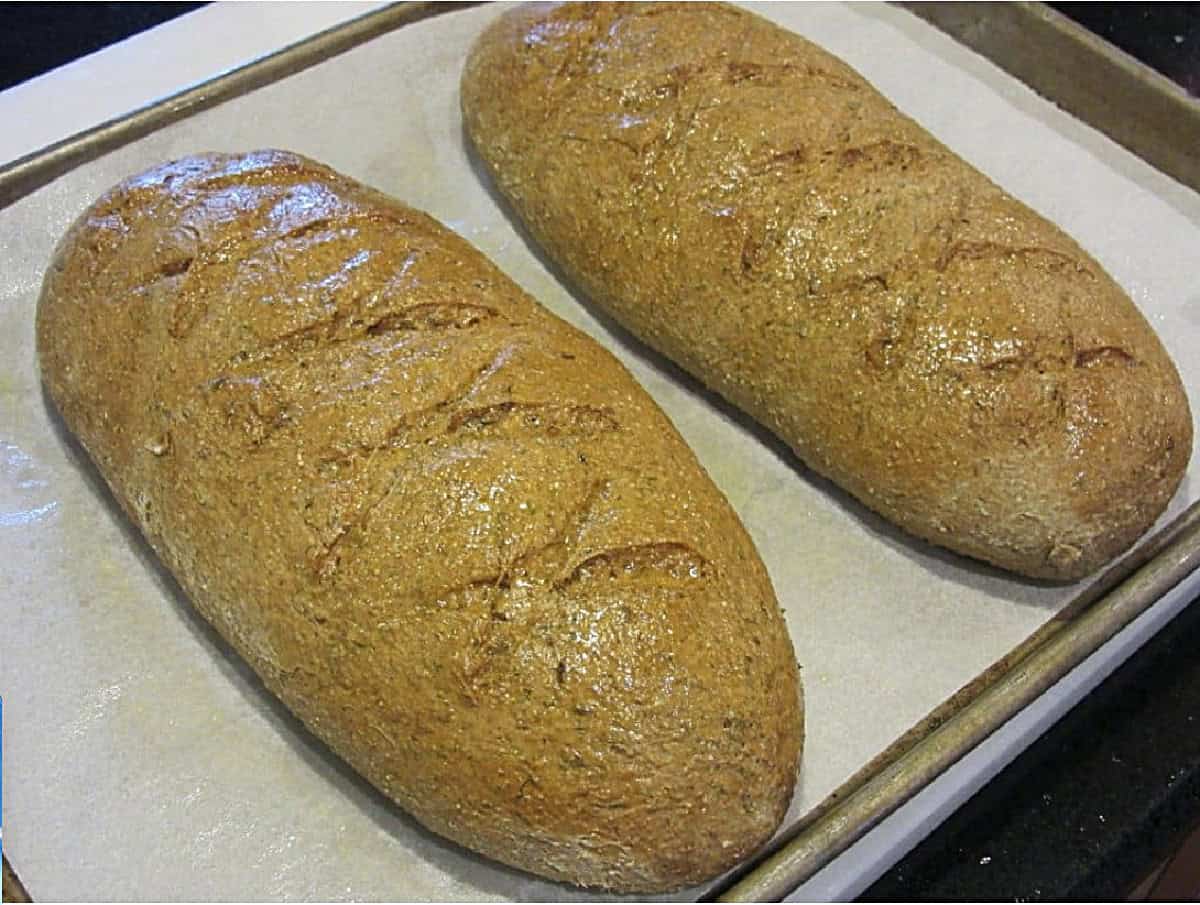

Related recipes for you to enjoy:
Save this for later.
Email forwarding service for saving information.

When you make today's recipe (and I hope that you will), I'd appreciate it if you'd take the time to come back and give it a star rating along with a comment on why you rated as you did.
Search engines such as Google appreciate comments and ratings and, in turn, will show my recipes to more people. Please look for the pink star rating box within the printable recipe card. Thank you!!
Printable Recipe Card
HOMEMADE RYE BREAD WITH DILL
Equipment
- stand mixer optional
- parchment paper optional
- kitchen scale optional
- kitchen timer optional
Ingredients
- 1 package (2¼ teaspoons) active dry yeast
- ¼ cup warm water 110-115 degrees
- ¼ cup packed brown sugar plus ¼ teaspoon
- 1½ cup warm water 110-115 degrees
- ¼ cup dark molasses
- 2 tablespoons olive oil
- 3 tablespoons caraway seeds
- 2 tablespoons dried dill weed
- 3 teaspoons salt
- 1¾ cups rye flour
- ¾ cup whole wheat flour
- 2¼ cups all-purpose flour
Instructions
- In a small bowl, dissolve the yeast in ¼ cup of warm water with ¼ teaspoon of brown sugar. Allow the yeast to sit for 5 minutes to get foamy.
- -In a large bowl with a wooden spoon, or in a stand mixer with the dough hook, stir together the yeast, water, ¼ cup packed brown sugar, 1½ cups warm water, molasses, olive oil, caraway seeds, and dill weed.
- -Stir in salt, rye flour, whole wheat flour, and all-purpose flour. If using a large bowl, switch to using your hands to mix the dough. Continue mixing (kneading) until the dough comes together to form a firm dough. Turn the dough out onto a lightly floured surface and knead by hand until smooth and elastic, about 5-6 minutes. Place the dough back into the bowl that has been sprayed with cooking spray. Spray the top of the dough. Cover the bowl with plastic wrap and place it in a warm, draft-free location to rise until doubled in size (approximately 1 hour).
- Punch the risen dough down and divide it into two equal portions. Roll each half gently on the counter to form two logs, approximately 12" long. Place each log onto a parchment-lined baking sheet, making sure to leave at least 5" of space between each loaf. Use a paring knife or bread lame to cut random X's in the tops of the loaves (optional) about ¼" deep.
- -Cover the loaves and place them in a warm, draft-free place to rise until doubled (approximately 1 hour).
- -Preheat the oven to 350 degrees F (175 degrees C).
- Bake in a preheated oven for 30-35 minutes or until golden brown and the loaves sound hollow when tapped. Remove to a wire rack to cool completely. Slice and serve.
Notes
Nutrition
I sincerely hope you'll enjoy this delicious and hearty homemade rye bread recipe as much as I've enjoyed bringing it to you!

Should you have any questions or comments regarding anything you've seen on my site, please don't hesitate to reach out to contact me. It is always my distinct pleasure to get back with you just as soon as I possibly can!
Thank you so much for visiting me today in my Kudos Kitchen. I hope you found something you'll love and that you will come back and visit me often. Please know that there is always room for you around my kitchen table!
Until we eat again, I hope you have a delicious day!





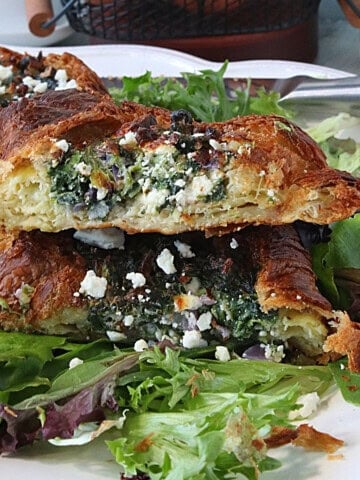


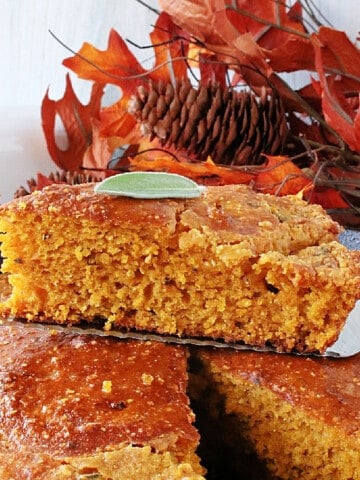
Catherine Rohl says
Tried making this today. The taste was ok. I could taste a hint of Rye but not strong enough nor the dill weed. The bread loaves did not rise at all! I did use luke warm water. It was dense, hard, crusty bread. I have been making bread for years. I would have to make some adjustments-- more water, more yeast (should be 2 Tbsps. Yeast), and maybe 1/4 cup of pickle juice too.
Renée says
Sorry to hear you weren't thrilled with this recipe as written, Catherine.
Wonder why your bread didn't rise? Are you sure your yeast was still good?
Nonetheless, feel free to make the changes you stated next time you make it.
Have a nice day.
Renee
blbtravel says
Love your recipes and ideas . Could this be made in a bread machine and what size of loaf would it make? A 2 pound or smaller? Thank you.
Renee Goerger says
Thank you SO much for the lovely compliment and the great question. Yes, this can definitely be made in a bread machine. Pretty much dump all the ingredients in AFTER you've allowed the yeast to "bloom" get foamy in a separate bowl with the water and ¼ teaspoon of brown sugar. Because this recipe makes two good sized loaves, this will make at least a 2 pound loaf in your machine. I hope you love this. Please let me know how it works out for you.
Thanks again, Renee
Susan says
Rye bread is my weakness but I've never had it with dill before. You have an extra loaf there, how about you send me some. 😉
Paula-bell'alimento says
That's some gorgeous homemade bread right there.
Angie says
I love rye bread, and what a great addition to add dill. I haven't made it in too long though.
Martha @ A Family Feast says
I adore rye bread (I practically grew up on it in a Polish household!) - and the dill you've added sounds so intriguing! Can't wait to try it!
Heather Schmitt-Gonzalez says
Oh yeah! I want to just pick that board up out of the first photo and walk away with it. These loaves sound wonderful, and I'm totally craving a sammich now!
The Food Hunter says
YOu have given me motivation to try making my own rye
Ashley @ Wishes and Dishes says
I have made plain ol' rye bread before but love the addition of the dill here! Very creative!
Melissa Falk says
I love good rye bread and this looks great. Into my recipe box it goes!